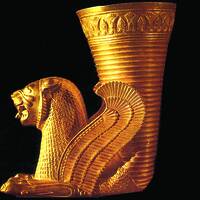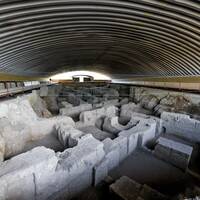It is called Hegamatane in Ancient Persian language, Hamatan in Pahlavi language, Hamedan in New Persian language and Ecbatana in Ancient Greece language. The history of this ancient super-city goes back to more than 3000 years ago. Ecbatana is the first capital of the first Aryan empire in 708 BC, Medes empire with Diako kingdom, and the summer capital of Achaemenid empire. The name of Ecbatana has been carved on the wall inscription of Darius the Great and also on the petroglyph of Hercules in Bisotun.
Ecbatana Hill, with twenty meters of height and fifty hectares of width, is located in the eastern hillsides of Zagros in the middle of Hamedan. According to Herodotus, one of the highlighted historians across the world, the city had seven walls in seven colors. Greece and Roman historians after Herodotus wrote that Diako had built seven intertwined forts in Ecbatana among them the Royal Fort was the seventh.
Over fourteen seasons of excavations during more than one hundred years, different ancient monuments were revealed such as Zarrin petroglyphs related to Ariaramnes, Arsames, Darius II and Ardashir I, the stone pedestal related to Ardashir II, Ecbatana battlement with nine meters of height, nine meters of width and eight meters of height, two large towers, golden Rhyton of goat, silver jar, silver cup, bronze coins, human statue of fired clay related to Parthian kingdom, inscribed pottery fragments with Pahlavi inscription, 90000 pottery fragments of glazed and painted vessel elements, ground adobe, wall adobe, plastered adobe, flagstone and water pipes.
The remains of two Parthian man’s and woman’s skeleton are placed inside a glass frame that go back to 1800 to 2000 years ago. Both of them are lying down inside a stone coffin with two meters of height, fifty centimeters of width and thirty centimeters of thickness. The woman’s body lies down on one side and she has two bronze bangles on her hand. This coffin is today placed in Ecbatana Museum.
Ecbatana Museum is one of fourteen historical museums of Hamedan province. This museum is located in the old building of a story with 600 meters of width including a hall, corridor and two vestibules with specific lighting for showing historical symbols and objects on the wooden stands or wall stands.
Ecbatana was inscribed on the index of Iran National Heritages in 1310 SH and it is being tried to be included on UNESCO World Heritage List.











